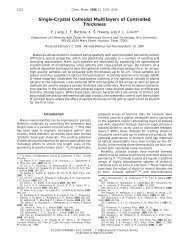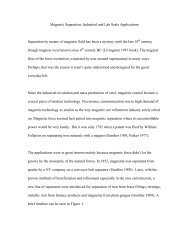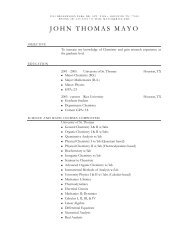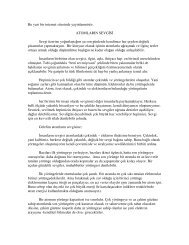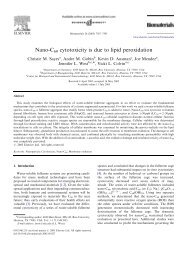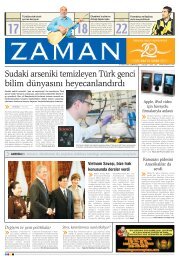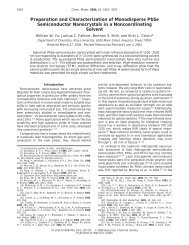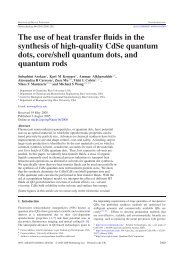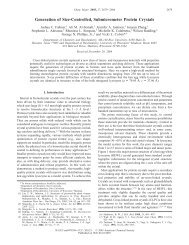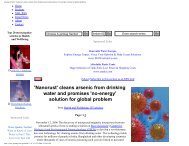Wet SEM Analysis of Quantum dot emulsions - Rice University
Wet SEM Analysis of Quantum dot emulsions - Rice University
Wet SEM Analysis of Quantum dot emulsions - Rice University
You also want an ePaper? Increase the reach of your titles
YUMPU automatically turns print PDFs into web optimized ePapers that Google loves.
The three last Peaks: Cr, Fe, Ni are probably from the stainless steel sample <strong>SEM</strong> holder. The<br />
rest <strong>of</strong> the Peaks are from the emulsion and contamination traces <strong>of</strong> the Water (cleaning sample<br />
Holder with Water).<br />
Figure 5. Energy Dispersive X-Ray Spectroscopy (EDS) <strong>of</strong> Q<strong>dot</strong> emulsion: X-Ray Energy<br />
emission spectra, Elemental <strong>Analysis</strong>, <strong>SEM</strong> secondary electron mode. The last peak Cr was<br />
probably from the stainless steel sample <strong>SEM</strong> holder. The Detector picked up Cd and Se<br />
Signals which reconfirmed that emulsion contained CdSe Q<strong>dot</strong>s. The rest <strong>of</strong> the Peaks are from<br />
the emulsion and contamination traces <strong>of</strong> the Water (cleaning sample Holder with Water).<br />
3. Conclusion<br />
Test run 1 and 2 showed that no useful data can be obtained with the electron beam pointed in<br />
the middle <strong>of</strong> the <strong>emulsions</strong>. Test run 3 and 4 demonstrated that if the electron beam is<br />
pointed at the edge <strong>of</strong> the sample holder that this area plays an important factor as a Interface<br />
reference point in visualizing the <strong>emulsions</strong> surface. The different chamber conditions in Test<br />
run 4 did not visualize the Q<strong>dot</strong> aggregation in the emulsion. However interesting visual<br />
effects in the morphological behavior <strong>of</strong> the surface <strong>of</strong> the emulsion exposed to the different<br />
sample chamber condition could be observed and were described in the Experimental section<br />
<strong>of</strong> this report: The Q<strong>dot</strong> emulsion seemed to be much more stable regarding the bubble “Pop<br />
corn” and “Strawberry” droplet visual effects. One hypotheses might explain the better<br />
physical stability <strong>of</strong> the Q<strong>dot</strong> emulsion when exposed to the heat generated by the electron<br />
beam: The CdSe might act as a kind <strong>of</strong> conductor conduit guiding the beam right through the<br />
emulsion to the bottom like a lightning rod the lightning to the ground. Whereas the blank/<br />
Control without the electrical conductor is longer exposed to the heat <strong>of</strong> the beam causing<br />
violent bubbling. The second more likely and reasonable hypotheses is simply by comparing<br />
the blank/ control emulsion to the Q<strong>dot</strong> emulsion by eye: The Q<strong>dot</strong> emulsion seemed to appear



